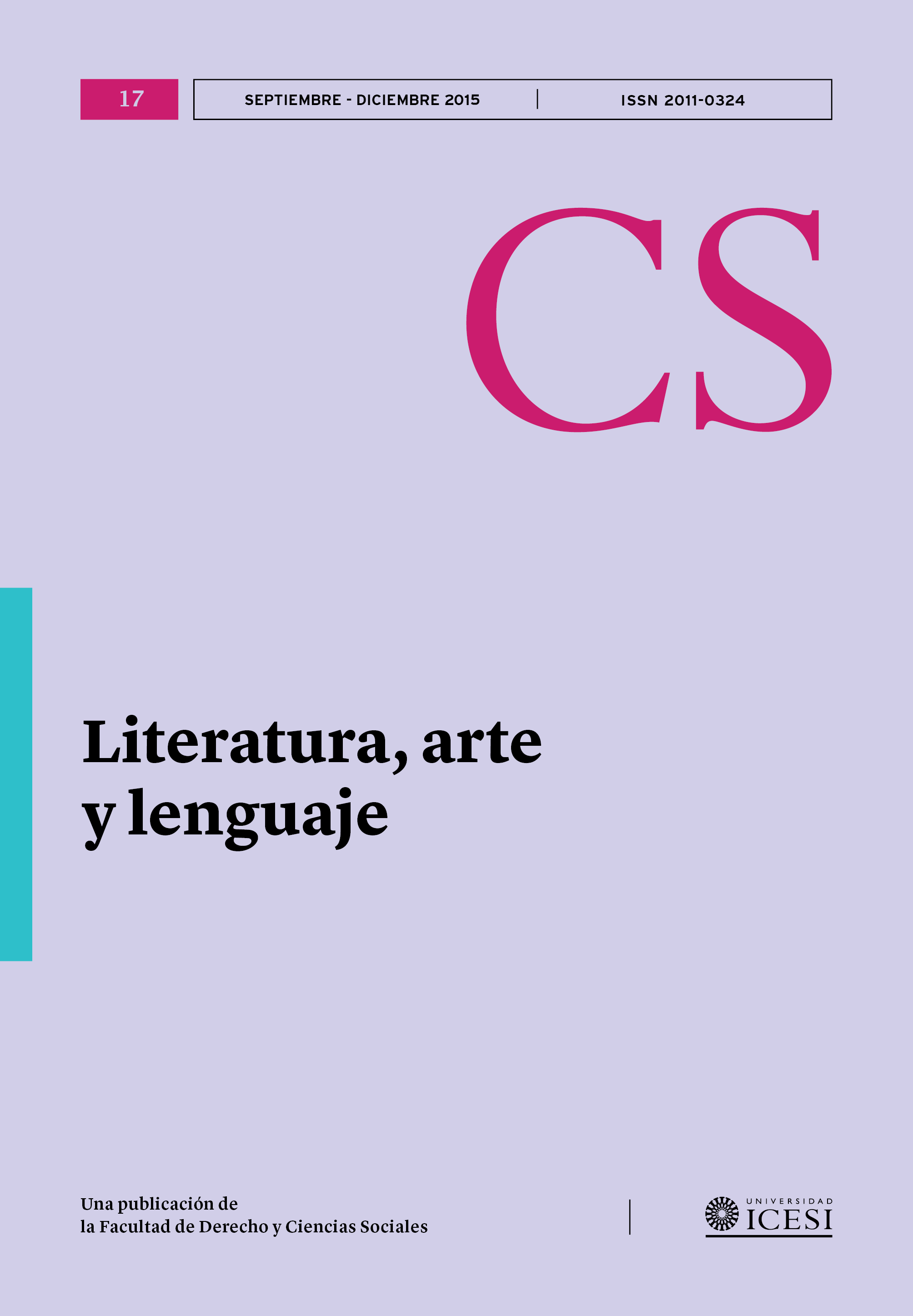Narrativas mágico-religiosas en las pandillas. Un estudio sobre la psicología del pandillero
DOI:
https://doi.org/10.18046/recs.i17.2056Palabras clave:
Pandillas, Creencias mágico-religiosas, Violencia urbana, MarginalidadResumen
Este artículo es resultado de una investigación sobre los sistemas culturales que sustentan la violencia entre pandillas de barrios marginales de Cali, Colombia. Se trata de creencias mágicas y religiosas de pandilleros que rodean los episodios de violencia, y que permiten observar aspectos de la psicología del pandillero que son adaptaciones funcionales a la realidad de las guerras por territorio y por venganzas, y que tienen la finalidad de dar sentido y significado a los acontecimientos trágicos de sus vidas. El estudio muestra cómo la santería se usa para buscar protección y dañar el enemigo, y cómo sus ideas de Dios y el diablo, del bien y del mal, carecen de una ética reguladora de las relaciones con los otros, y son expresión de un mecanismo de defensa narcisista. Se concluye que este sistema cultural de creencias es una interesante fórmula de transacción entre la realidad social objetiva y las fantasías subjetivas.Descargas
Referencias
Bourdieu, P. (2000). La dominación masculina. Barcelona: Anagrama
Berger, P. y Luckmann, T. (2001). La construcción social de la realidad. Buenos Aires: Amorrortu,
Bettelehim, Bruno. (1998). Educación y vida moderna. Bogotá: Grijalbo Mondadori.
Cerbino, M. (2004). Pandillas juveniles cultura y conflicto de la calle. Quito: Abya Yala.
Connell, R. W. (2003). Masculinidades. Pueg. México: Universidad Autónoma de México.
Elias, N. (1990). Compromiso y distanciamiento. Barcelona: península.
Elias, N. (1990). El proceso de la civilización. Bogotá: Fondo de Cultura Económica.
Elias, N. (1997). La civilización de los padres y otros ensayos. Bogotá: Norma.
ERIC Group: Honduras (2005). Maras y pandillas en Honduras. Tegucigalpa: Editorial Guaymuras.
Feixa, C. (1998). De jóvenes, bandas y tribus. Barcelona: Ariel.
Fernandez, C. (1998). Jóvenes violentos. Causas psicológicas de la violencia en grupo. Barcelona: Icaría.
Frazer, J. G. (1995). La rama dorada. Bogotá: Fondo de Cultura Económica.
Freud, S. (1981). Tres ensayos sobre una teoría de la sexualidad. Madrid: Biblioteca Nueva.
Freud, S. (1981). Tótem y tabú. Biblioteca Nueva: Madrid,.
Freud, S. (1981). El hombre de las ratas. Madrid: Biblioteca Nueva
Fuller, N. (2002). Masculinidades. Cambios y permanencias. Lima: Pontificia Universidad Católica del Perú.
Giddens, A (1997). Modernidad e identidad del yo. El yo y la sociedad en la época contemporánea. Barcelona: Península.
Green, A. (1992). El honor y el narcisismo. En el honor. imagen de sí o don de sí: un ideal equívoco. Barcelona: Cátedra.
Frazer J. G. (1991). La rama dorada. Bogotá: Fondo de Cultura Económica.
Guber, R. (2004). La etnografía. Método, campo y reflexividad . Buenos Aires: Norma.
Kohlberg, L (1984). Moral Stages: A Current Formulation and a Response to Critics. Basilea: S Karger Publisher.
Laplanche, J., Pontalis, J-B. (1993). Diccionario de psicoanálisis. Barcelona: Labor.
Levi-Strauss, C. (1985). Antropología estructural. Barcelona: Altaya.
Lewin, K. (1971). Dinámica de la personalidad. Madrid: Morata.
Losonczy, A. M. (2001). Santificación popular de los muertos en cementerios urbanos colombianos. Revista Colombiana de Antropología, 37, pp. 6-23.
Martín-Baró, I. (1998). Psicología de la liberación. Madrid: Trotta
Mauss, M. (1979). Sociología y antropología. Madrid: Tecnos.
Mead, G. H. (1982). Espíritu, persona y sociedad. Barcelona: Paidós.
Perea, C. M. (2007). Con el diablo adentro. México: Siglo XXI.
Perea, C. M. (2008). ¿Qué nos une? jóvenes, cultura y ciudadanía. Medellín: la carreta, 2008.
Reichel Dolmatoff, G. (1997). Estudios antropológicos. Bogotá: Instituto colombiano de cultura - Colcultura
Ross, M. H. (1995). La cultura del conflicto. Barcelona: Paidós.
Segato, R. (2003). Las estructuras elementales de la violencia. Ensayos sobre género entre la antropología, el psicoanálisis y los derechos humanos. Buenos Aires: Universidad Nacional de Quilmes.
Spierenburg, P. (1998). En Weiler V. (comp.)Violencia, castigo, el cuerpo y el honor: una revaluación. figuraciones en proceso. Bogotá: Universidad Nacional de Colombia.
Valdés, T. y Olavarría, J. (1997). Masculinidades. Poder y crisis. Santiago de chile: Ediciones de las mujeres.
Valenzuela, J. M.; Nateras, A.; Reguillo, R. (coord.). (2007). Las maras. Identidades juveniles al límite. México: Universidad Autónoma.
Weiler, V. (comp.). (1998). Figuraciones en proceso. Bogotá: Universidad Nacional de Colombia.
Publicado
Número
Sección
Licencia
Derechos de autor 2015 Jorge Ordóñez Valverde

Esta obra está bajo una licencia internacional Creative Commons Atribución-NoComercial 4.0.
© Derechos reservados de autor
El material de esta publicación puede ser reproducido sin autorización, siempre y cuando se cite el título, el autor y la fuente institucional.
El contenido publicado en Revista CS se distribuye bajo la licencia Creative Commons BY-NC 4.0 Atribución/Reconocimiento-NoComercial 4.0 Internacional.
Usted es libre de:
Compartir — copiar y redistribuir el material en cualquier medio o formato.
Adaptar — remezclar, transformar y construir a partir del material.
Bajo los siguientes términos:
Atribución — Usted debe dar crédito de manera adecuada, brindar un enlace a la licencia, e indicar si se han realizado cambios. Puede hacerlo en cualquier forma razonable, pero no de forma tal que sugiera que usted o su uso tienen el apoyo de la licenciante.
NoComercial — Usted no puede hacer uso del material con propósitos comerciales.












